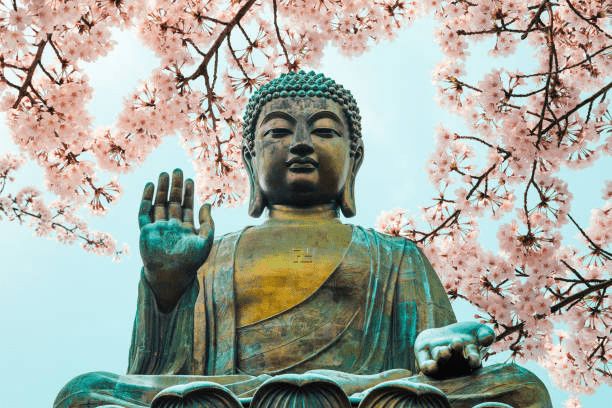
Mindfulness has become very popular in recent years in the West, especially in the fields of wellness, psychology, and medicine. But its roots are much older. In this article, we will explore where mindfulness comes from, how it emerged, its basis in Eastern traditions, and how it has been integrated into modern scientific and therapeutic contexts.
The roots of mindfulness in the East
Mindfulness, or full attention, has its origins in the contemplative traditions of the East, especially in Buddhism, and is a fundamental part of the Noble Eightfold Path.
It is important to point out that the pillars on which the history of Mindfulness rests are called Vipassana meditation, a practice that is part of the religious rituals of many areas of Asia including or near India, and which in turn has to do with a broader philosophical doctrine that has to do with meditation in general
Much could be said about the Vipassana meditation tradition in Asia, but the main point is to understand that it is a phenomenon that began with Buddhism approximately 3,500 years ago. The philosophical root of what would one day become Mindfulness was known in the Buddhist world as sati. one of the main factors on the path to enlightenment and liberation according to the ideas of Gautama Buddha. In fact, sati can be translated as full awareness; or, in English, “mindfulness”.
The clash of cultures: The West enters the game
But Mindfulness itself, unlike Vipassana meditation from which it originates, is a product of the mixture of Western cultures and the Far Eastern regions where Buddhism has taken root.
Initially, this contact between different types of societies came about through the British colonization of IndiaAt the end of the 19th century, although the interests of this European empire were primarily economic and military, this invasion also had scientific and intellectual implications. The British who settled in these lands were surprised by many of the things they saw there, including the tranquility and philosophy of life of those who had dedicated time and effort to practicing certain types of meditation. This motivated a series of investigations that developed throughout the 20th century.
These types of studies received renewed interest from European academics and researchers following the parallel discovery of many other phenomena outside of European culture that fascinated authors and scientists of all kinds, from thinkers like Carl Jung to anthropologists who sought to learn more about this region of the world, which until recently had been relatively isolated from the rest. As globalization intensified its effects, so too did... cultural exchanges.
One of the turning points in the development of the history of Mindfulness can be found in the research carried out by Jon Kabat-Zinn.
This American physician is famous for having proposed, since the 1970s, the use of mindfulness in the clinical setting as a tool to achieve therapeutic goals. From that project He initiated what is known as Mindfulness-Based Stress Reduction, or Mindfulness-Based Stress Reduction (MBSR) with the aim of taking the therapeutically useful elements of meditation, investigating them and enhancing them in the field of applied science, once separated from their role in Buddhism.
Mindfulness is not a religion
Although it originated in spiritual contexts, the essence of mindfulness is not religious. It is a practice of observing experience, moment by moment, without judgment. This is why it has been possible to extract its core principles and adapt it to secular contexts, such as healthcare, education, or work.
From tradition to science
The work of Kabat-Zinn and many others paved the way for mindfulness to become the subject of numerous scientific studies. Over the past few decades, its effectiveness in reducing stress, anxiety, chronic pain, and many other aspects of mental and physical well-being has been demonstrated.
Mindfulness is a living bridge between ancient wisdom and modern science. Although its roots are in the East, today it's part of our daily lives in the West. And the best part is that it's not just about understanding it, but about experiencing it.










